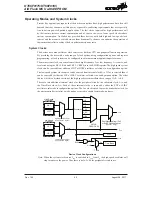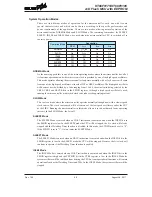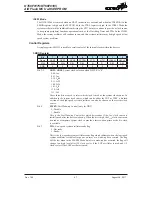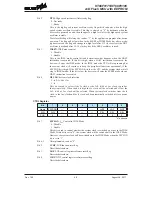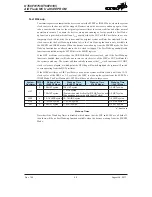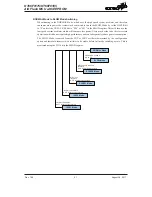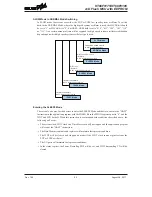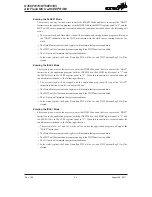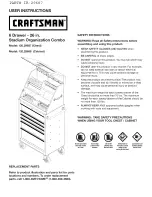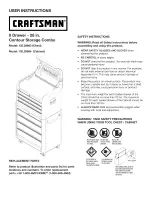
Rev. 1.50
3�
����st ��� �01�
Rev. 1.50
39
����st ��� �01�
HT66F0175/HT66F0185
A/D Flash MCU with EEPROM
HT66F0175/HT66F0185
A/D Flash MCU with EEPROM
Reading Data from the EEPROM
To read data from the EEPROM, the read enable bit, RDEN, in the EEC register must first be set
high to enable the read function. The EEPROM address of the data to be read must then be placed
in the EEA register. If the RD bit in the EEC register is now set high, a read cycle will be initiated.
Setting the RD bit high will not initiate a read operation if the RDEN bit has not been set. When
the read cycle terminates, the RD bit will be automatically cleared to zero, after which the data can
be read from the EED register. The data will remain in the EED register until another read or write
operation is executed. The application program can poll the RD bit to determine when the data is
valid for reading.
Writing Data to the EEPROM
To write data to the EEPROM, the EEPROM address of the data to be written must first be placed
in the EEA register and the data placed in the EED register. Then the write enable bit, WREN,
in the EEC register must first be set high to enable the write function. After this, the WR bit in
the EEC register must be immediately set high to initiate a write cycle. These two instructions
must be executed consecutively. The global interrupt bit EMI should also first be cleared before
implementing any write operations, and then set again after the write cycle has started. Note that
setting the WR bit high will not initiate a write cycle if the WREN bit has not been set. As the
EEPROM write cycle is controlled using an internal timer whose operation is asynchronous to
microcontroller system clock, a certain time will elapse before the data will have been written into
the EEPROM. Detecting when the write cycle has finished can be implemented either by polling the
WR bit in the EEC register or by using the EEPROM interrupt. When the write cycle terminates,
the WR bit will be automatically cleared to zero by the microcontroller, informing the user that the
data has been written to the EEPROM. The application program can therefore poll the WR bit to
determine when the write cycle has ended.
Write Protection
Protection against inadvertent write operation is provided in several ways. After the device is
powered on, the Write Enable bit in the control register will be cleared preventing any write
operations. Also at power-on the Bank Pointer register, BP, will be reset to zero, which means that
Data Memory bank 0 will be selected. As the EEPROM control register is located in bank 1, this
adds a further measure of protection against spurious write operations. During normal program
operation, ensuring that the Write Enable bit in the control register is cleared will safeguard against
incorrect write operations.
EEPROM Interrupt
The EEPROM write interrupt is generated when an EEPROM write cycle has ended. The EEPROM
interrupt must first be enabled by setting the DEE bit in the relevant interrupt register. However, as
the EEPROM is contained within a Multi-function Interrupt, the associated multi-function interrupt
enable bit must also be set. When an EEPROM write cycle ends, the DEF request flag and its
associated multi-function interrupt request flag will both be set. If the global, EEPROM and Multi-
function interrupts are enabled and the stack is not full, a jump to the associated Multi-function
Interrupt vector will take place. When the interrupt is serviced only the Multi-function interrupt flag
will be automatically reset, the EEPROM interrupt flag must be manually reset by the application
program.





















